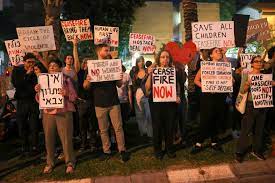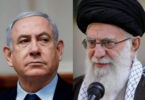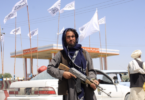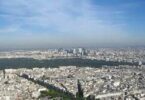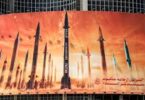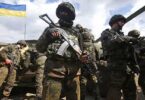Suren Pillay
Writing on October 27, the Associated Press’s Josef Federman shared some stark observations: “Just three weeks into the deadliest war between Israel and Hamas, it already is clear that the bloodshed has flipped long-standing assumptions in Israel and the region upside down. Israel’s military and intelligence services were exposed as incompetent and ill-prepared … Israelis’ sense of personal security was shattered.”
Even if many older paradigms have collapsed, as some observers have pointed out, Israel has turned with a vengeance to a familiar one: overwhelming brutal violence. The death toll statistics coming out of Gaza now are unprecedented. The Israeli army’s relentless bombing has slain more than 11,000 people, including more than 4,500 children; thousands are also missing, buried under the rubble and likely dead as well.
The number of children killed in Gaza has surpassed the annual number of children killed in conflict globally; the number of civilians killed in Gaza has now exceeded the total death toll in Ukraine since February 2022. These numbers are climbing every day, as the Israeli military continues to indiscriminately bomb civilian buildings, including hospitals and schools. As a Black South African, watching these horrific events unfold, I cannot but reflect on my country’s own violent past.
I recall the relentless planning and violence that accompanied the last decades of white South Africa’s attempts to make apartheid work. I remember the fears that grew among white South Africans as they put their trust in a sophisticated military capability, a conscription army, a nuclear weapons capacity and steadfast friends in the West, particularly the United States, Britain and France. It was the height of the Cold War and South Africa claimed to be the only democracy in Southern Africa, protecting “civilisation” from the encroaching threats surrounding it. Its military might and expansive police force were accompanied by a series of policies designed to maintain white minority rule. Each attempt to impose new such policies failed in the face of mass resistance. The more they failed, the more brutal the violence meted out by the military and the police with the encouragement of white politicians and a terrified white electorate.
The “terrorists”, as the national liberation movements were referred to, could not be crushed by the mightiest army in Southern Africa. By mid-1985 a significant section of the white electorate and some in the ruling party realised that the problem of Black resistance was not going to go away. Something more drastic was going to be required. The then State President, the hawkish P W Botha, himself a former defence minister, was encouraged by a faction of his party to open parliament that year with a conciliatory speech, to make a grand policy statement that would offer the Black majority a hopeful sign that they would become part of the whites-only democracy that was South Africa. It was called the “crossing of the Rubicon speech”. Botha played along but at the last minute baulked and defiantly went in the opposite direction, instead giving a speech in which he vowed to intensify the fight against “terrorism”, refusing to negotiate with “terrorists” in prison, like Nelson Mandela.
What followed was the extension of the state of emergency in South Africa and the killing of thousands of people resisting apartheid rule, as Botha and his faction turned to more and more violence and repression. Eventually, his own party leaders staged a palace coup and installed F W de Klerk in power. The new president and the faction he represented had realised that the end was nigh, that the decades of repression were not succeeding in making a political and economic system work that excluded the majority and only benefitted the white minority. De Klerk and his faction realised that whites were not going to win the war, even if they had more guns, bombs, tanks and artillery and could probably continue to rule for a long time through sheer force. It was not sustainable because the more repression they deployed, the more resistance they faced and the more white South Africans lived in fear.
The more the violence was flashed across the world’s television screens, the harder it became for white South Africa’s friends in the West to steadfastly support it. It was a tipping point that led to political negotiations, to talking to “the terrorists” who they saw as their existential enemy. It was a tipping point that created the pathway to a single state with equal citizenship for all, based on residency, not origins, race, religion or ethnicity. Until October 7, Israel also had the confidence that its sophisticated military and intelligence capabilities, its design of urban space and use of walls and barriers to police, control and monitor every aspect of Palestinian life, were going to work to manage its “Palestinian problem” successfully. Israel’s powerful allies in the West were even facilitating the making of new friends in Africa, the Gulf and South Asia through military cooperation and the sales of arms and intelligence technologies.
Most Israelis and their political leaders were so confident that this management of their “Palestinian problem” was working that any reference to “peace talks” or even rhetorical acknowledgement of a two-state solution to the outside world became unnecessary, moribund and superfluous. Life could proceed. Rave parties could happen in the desert. The normality that had become normal continued in the abnormality of occupation. Until October 7. Ordinary Israelis may begin to realise that no matter how sophisticated or strong the Israeli army, Mossad, or the apartheid regime appear, the “Palestinian problem” is not going to go away as long as the Palestinians are alive. Just as with white South Africans, fear grows exponentially. And Israel is responding to that fear with a colossal bombing campaign of annihilation. But as white South Africans learned, violence cannot eradicate the “problem”, nor create the life of peace they might long for.
At this point, several questions arise. How far does the notion “the ends can justify the means” extend to make the scale of the killings of civilians acceptable to those who support Israel’s right to defend itself? How far will Israelis go before they realise they cannot live with the blood of thousands of children on their hands? Can Israelis and the friends of Israel justify to themselves these actions as expressions of a civilisation that claims to value human life in an equal manner? Do Israelis want to be remembered as the people who attempted to exterminate men, women and children through an act of collective punishment?
Whatever may be left in the ruins and rubble that awaits us after this war on Gaza, Israel’s “Palestinian problem” will not have gone away. Ordinary Israelis will surely never sleep again with the confidence that their state can fully protect them. They will do well to learn from white South Africans who, after 300 years of minority rule, realised it was an impossible political project to continue to defend so violently, and still maintain any semblance of a moral high ground.
There is a tipping point when even for the defenders of such a project, the faint question rings louder and louder in the collective conscience: how far is too far? There can be no going back to the promises of security based on what was before. There can be no going forward in peace if it means more and more blood of children and civilians haunting successive generations who will have to take responsibility for the actions unfolding before our eyes today. As a South African who has lived to cross the Rubicon, I hope this catastrophe will force Israelis to see that only a just and inclusive political solution based on equal citizenship for all is going to bring them freedom from fear.
Aljazeera

